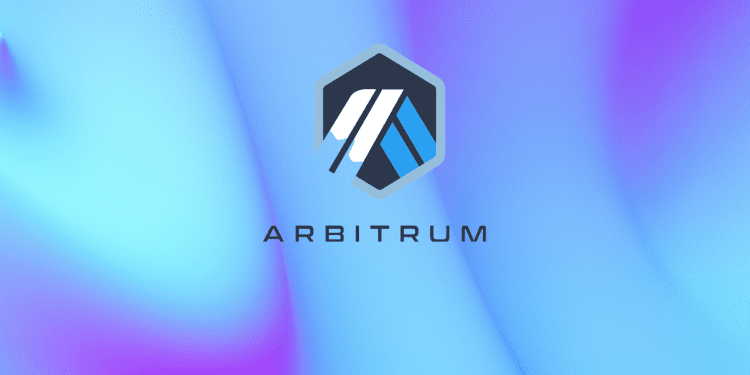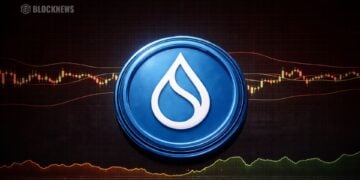Introduction
Ethereum is the most used smart contract blockchain, with the most significant market cap and total value locked (TVL). It hosts the most extensive ecosystem, and since its launch in 2015, it has seen exponential growth in adoption and popularity. This same growth has brought about increasing scalability issues with increasing gas fees. Several competing smart contract platforms are racing to solve this issue without generating other challenges on their blockchain. However, layer 2s have taken the alternative route of joining Ethereum’s strengths and security with off-chain transaction execution. Rollups decongest the network and are currently the most sought-after layer two solutions for faster transaction speeds and throughput.
What is Arbitrum?
Arbitrum is currently the most significant layer two solutions, with a TVL of around $2.85 billion. That amounts to a whopping 51.82% of the layer two market share, as per information on L2BEAT. Arbitrum is a set of technologies created to deal with Ethereum’s scalability problems, specifically its increasingly slow transaction speeds and finality. The Arbitrum chains can be used to do everything which is done on Ethereum. Its ecosystem includes wallets, bridges, exchanges, NFT marketplaces, swapping, lending, and payments, among other applications.
The Arbitrum optimistic rollups offer:
- Trustless security
- Ethereum compatibility
- Scalability
- Minimum costs
Features
Arbitrum one: This is the flagship chain launched in August 2021. Should the need arise, the team still maintains pausing and upgrading control of the system. Since the technology is still new and the chain is in mainnet beta, the team wants to be able to react. Ultimately, the aim is to decentralize completely.
By October 2021, Arbitrum one had already facilitated hundreds of project launches, thousands of user interactions, millions of transactions, and billions in bridged dollars, which is considered an enormous success. These transactions can be monitored on Arbiscan, the chain’s explorer. Notable dApps using Arbitrum include GMX, DOPEX, and Radiant.
- Interactive Fraud Proofs: This is how disputes are resolved. The chain takes an “innocent until proven guilty” attitude. Then, if a transaction is challenged, most of the argument is solved off-chain until it is narrowed down to a single execution step, in contrast to reproducing the execution of an entire transaction. This is believed to be more efficient and flexible.
- Arbitrum Nitro: It is an Arbirtum one upgrade to power Arbitrum by WebAssembly architecture (WASM), which makes it even faster and more compatible with Ethereum Virtual Machine (EVM). The complete migration took place last August 2022. This made the chain 7x-10x quicker and cheaper.
- AnyTrust Chains: This architecture permits lower costs and faster withdrawals in exchange for a minimal extra trust assumption. This chain requires less trust than sidechains because it is built on Ethereum and can rely on its security.
- Arbitrum Nova: The first chain built on AnyTrust technology, launched last July 2022 and made open to the public in August 2022. The chain is promoted for gaming, social projects, and other dApps requiring high volume and data stored off-chain. This is the second Arbitrum chain running on the mainnet.
Ecosystem and the future:
The Arbitrum Odyssey: A campaign to provide users with the possibility of exploring and experiencing the Arbitrum ecosystem and, in return, receive exclusive NFTs designed by Ratwell & Sugoi, has set off in June 2022. However, it was postponed until the release of Nitro for a better user experience. We are yet to hear from them about the continuation of this program. This is expected to bring new users to the ecosystem.
The Merge: The outcome of the ‘The Merge’ upgrade on the Ethereum chain will ultimately influence the adoption of Arbitrum. If Ethereum adoption increases due to it becoming more environmentally friendly, so will it on Arbitrum. Although, it is essential to note that this upgrade will not change Ethereum’s scalability or gas fees, sustaining the long-term need for layer 2s.
Arbitrum token: There is no native token and no talk of introducing one, although the community hopes that since Optimism, a competing optimism rollup, has one, Arbitrum will eventually launch its own. Speculators hope that the NFTs rewarded during the Arbitrum Odyssey will give holders advantages in the future should a token be found.
Risks: Since the technology is new, users might be exposed to smart contract bugs on the chain. Users must exercise caution as the Arbitrum Token Bridge has a 7-day withdrawal period due to current design limitations. One way around this is via the Hop Protocol, which allows the transfer of tokens across rollups and their shared layer one chain in a quick and trustless manner.














